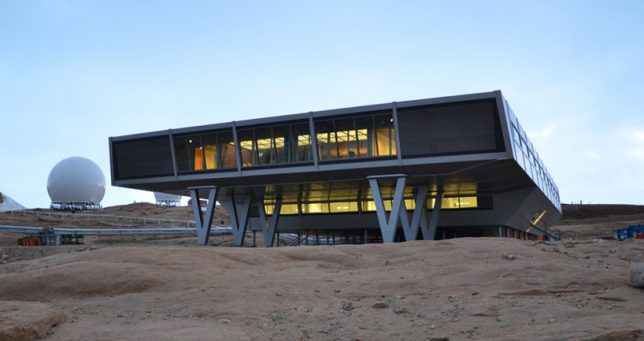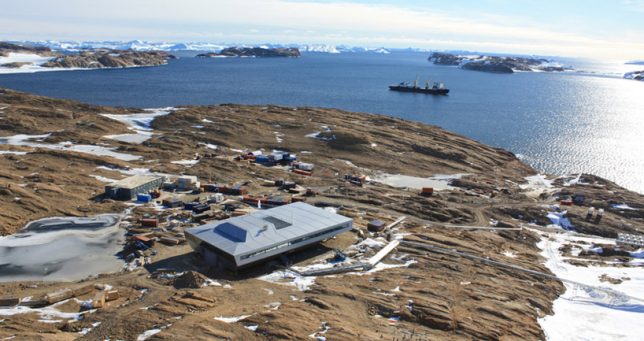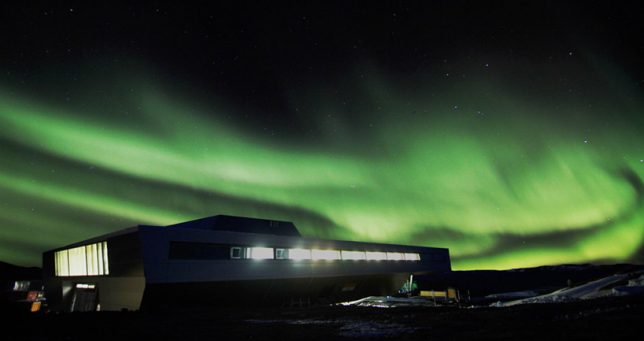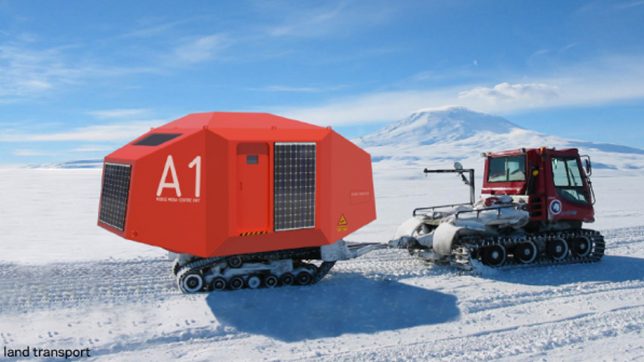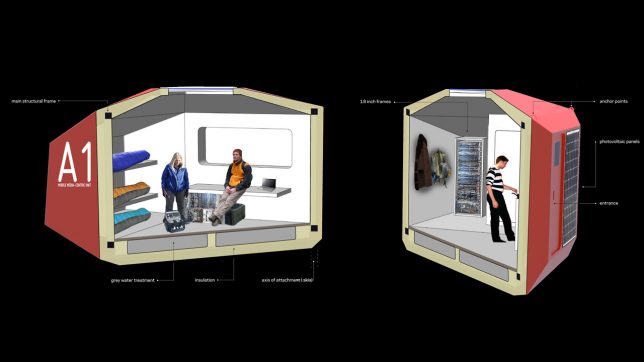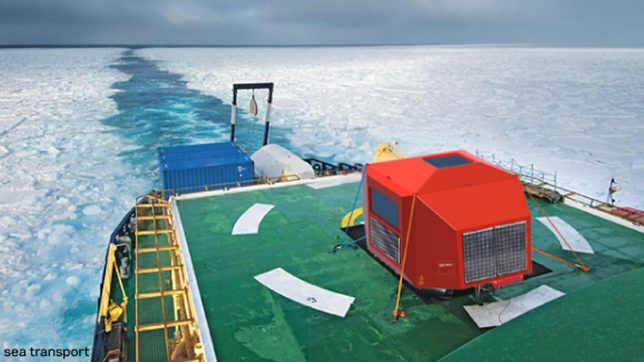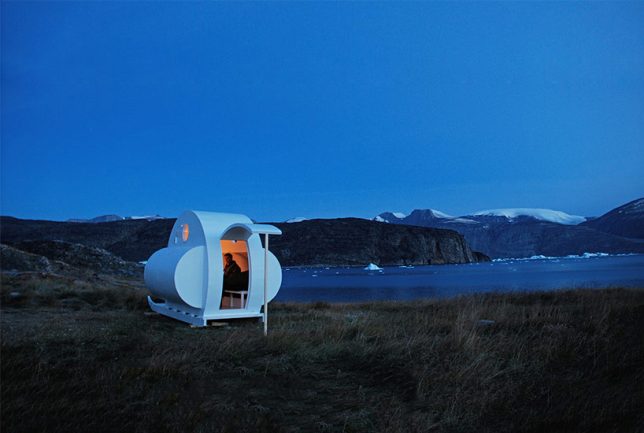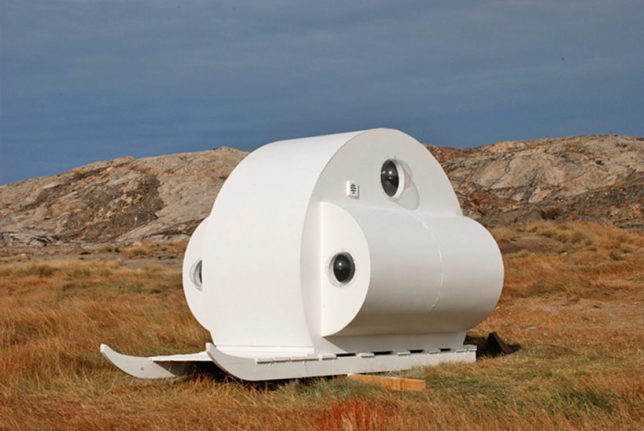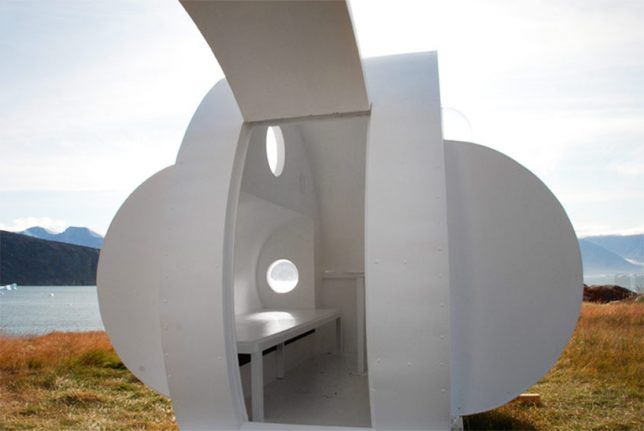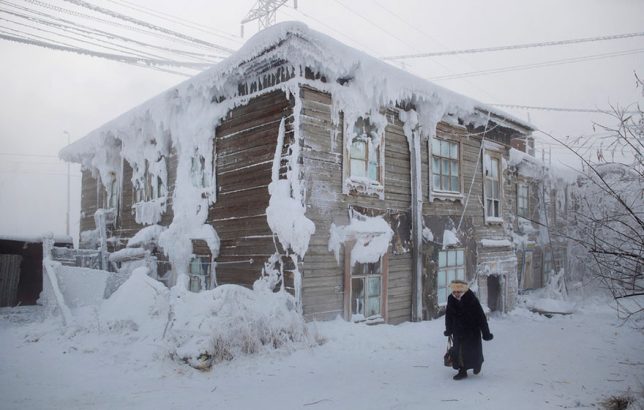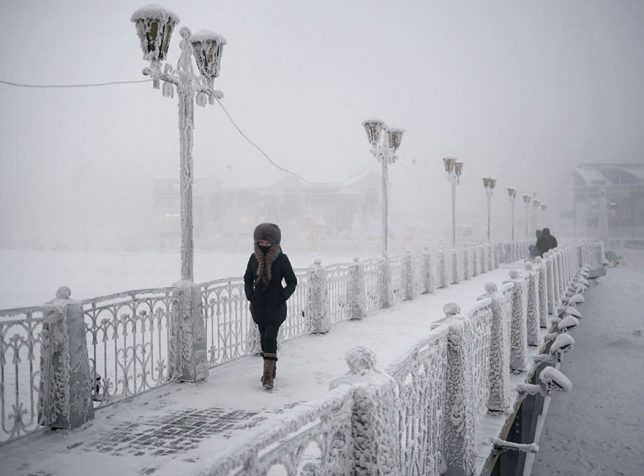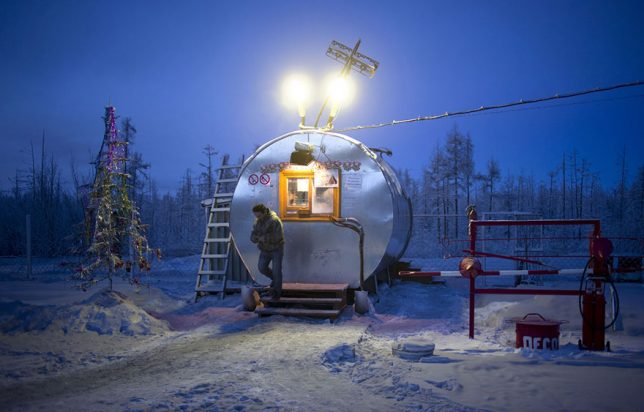Shipping Container Research Center in Antarctica
134 shipping containers make up the Bharati Antarctic Research Station by Hamburg-based Bof Arkitekten, all of them wrapped within an insulating aerodynamic metal skin. The 27,000 square foot self-sufficient development was designed to be cmopletely disassembled when it’s no longer useful; it contains 24 single and double rooms as well as a kitchen/dining room, library, fitness room, offices, lounge and an entire floor of laboratory and technical spaces.
Mobile Arctic Unit by MAP Architects
Designed to be an open-source mobile architecture system that can be recreated as needed, the Mobile Arctic Unit by MAP Architects is capable of functioning in extreme environments and contains sleeping units that transform into desks when folded. The toilet and shower feature an integrated snow smelter, and the flooring module includes greywater treatment and storage. All of the elements are interchangeable and replaceable so the units can be modernized or modified to specific purposes when needed.
Nomadic Sled Habitats for the Arctic
While they don’t contain much more than a small enclosed space that lets adventurers get out of the freezing wind for a bit, these mobile sled habitats are intriguing for their ease of movement and modernity, updating the traditional ice fishing hut typology. Designed by artist Rob Sweere, the sled houses accommodate six people each, are insulated, and can be used for hanging out, cooking, or as a sleeping shelter for two. Transparent portholes let in daylight.
Oymyakon, Coldest Inhabited Place in the World
Ever wonder what life looks like in the coldest continuously inhabited place on earth? Photographer Amos Chapple embarked upon a rather arduous journey to the Russian town of Oymyakon, where temperatures average -60 degrees Fahrenheit in January, documenting the houses, shops, cars and frozen bridges. It’s so cold there, cars have to either be stored in heated garages or left running all the time – or they’ll never start back up again. As you might imagine, the photographer had troubles with his camera focus and zoom rings freezing into place. As is common in such places around the world, the architecture is surprisingly simple, relying on the heat generated by locally mined coal rather than any sophisticated insulation techniques.
